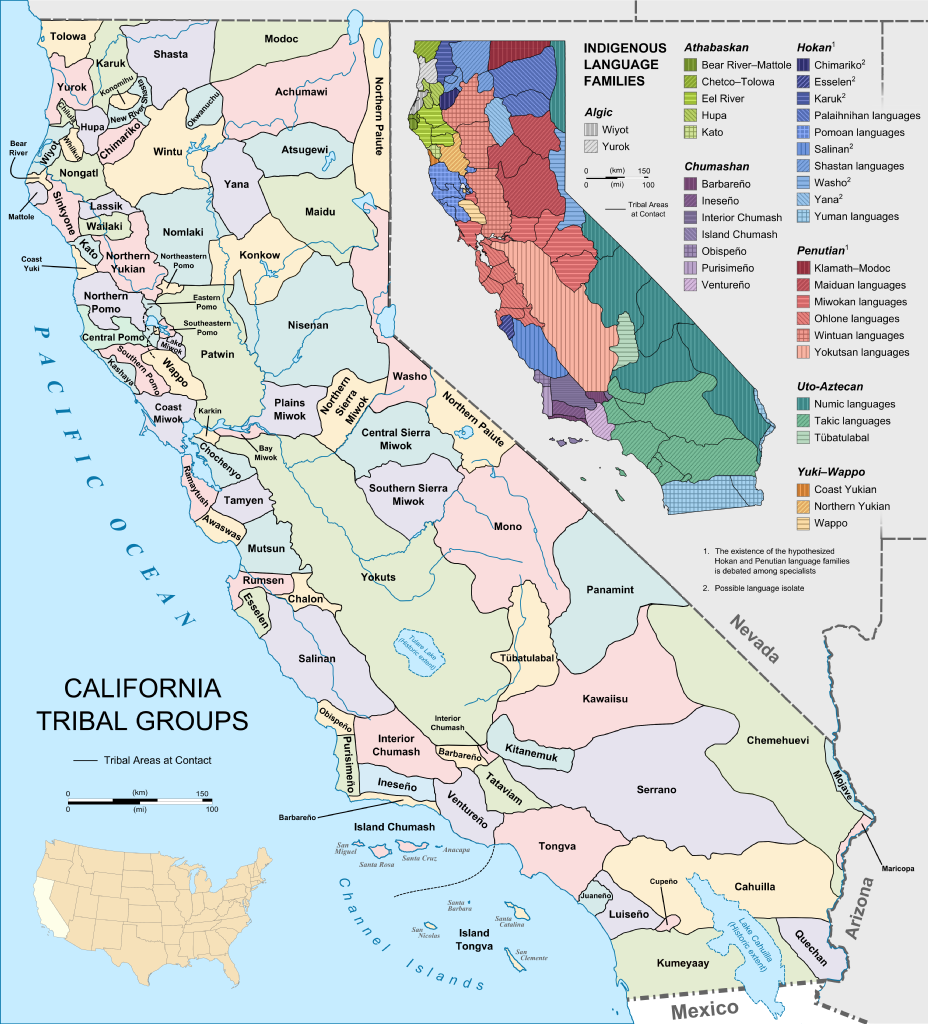Language shapes the way we see the world. This isn’t limited to vocabulary for particular items, but the framing of language determines how we experience reality. An example of this is in the way the Wintu language uses words that convey cooperation instead of coercion: while in English we might say that we took the child with us, in Wintu they would say that they went with the child [Lee 1959 (Hinton 1996)]. This may seem like an inconsequential difference but it informs the perspective of the speaker.
When we lose a language, we lose a different way of seeing the world.
It is important to keep in mind that the boundaries and language names that we use to categorize California Indians were not necessarily recognized by Native Californians, but were used by linguists and anthropologists to categorize and organize different tribes based on linguistic and cultural traits (Hinton 1996).
Click on the image below for a closer look.

Map showing the language diversity in the state of California.
This raises another question: what names should we use when talking generally about Native Americans? Indians? Native Californians? Indigenous people? Any of these terms are used to describe people as though they are the same, but who are not the same. What they share is a common history of dispossession, cultural and linguistic repression, and violence. For this project, we try to use the appropriate (if imposed) tribal names when possible, but when speaking about native people in general we found that we move between Native Californians, Native people, Indians, and Indigenous people the most often. “Californian” is problematic because this was not California for the vast majority of its history and to categorize a large group of people under this new umbrella seems inappropriate. Likewise, we stay away from Native American for the most part because we are talking specifically about the region of California. American, Californian, and Indian are all colonized terms; there is no correct term to use for disparate groups of people whose primary similarity is a history of colonization, so our intent is to do as little harm as possible.
Interested in learning more? Click the link to explore the Languages of California interactive map from the Linguistics department of UC Berkeley. (You’ll need flash!)
